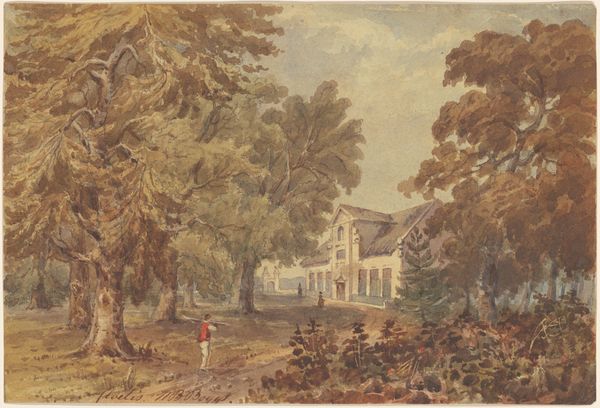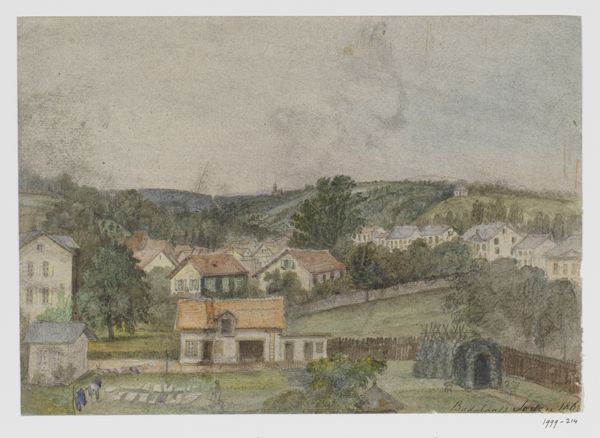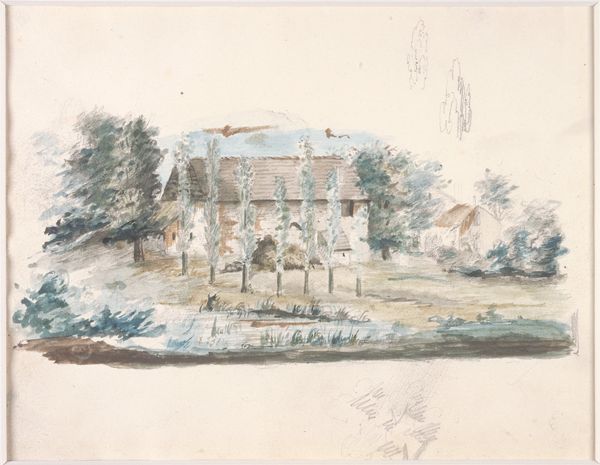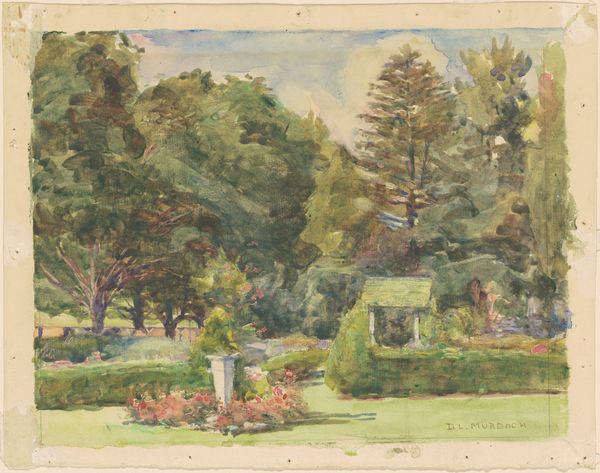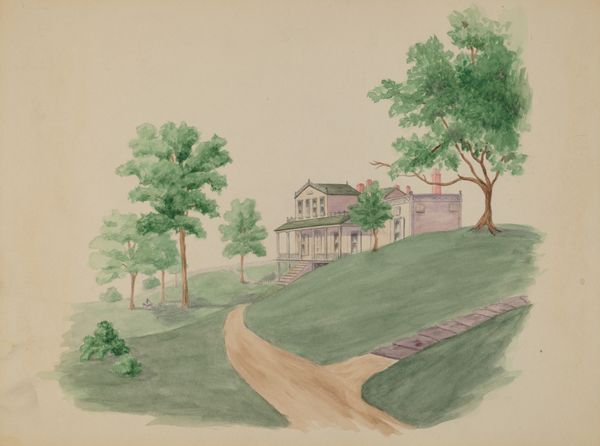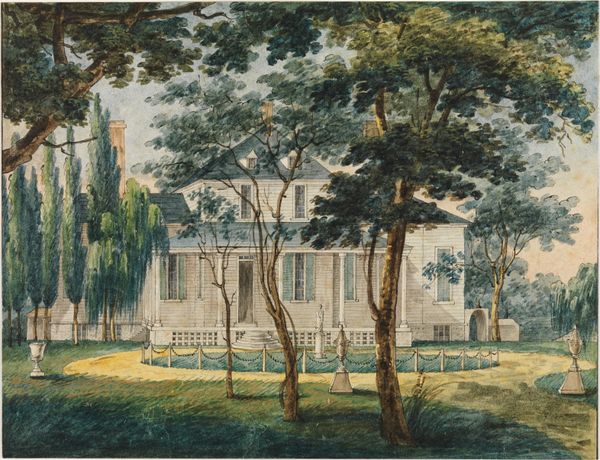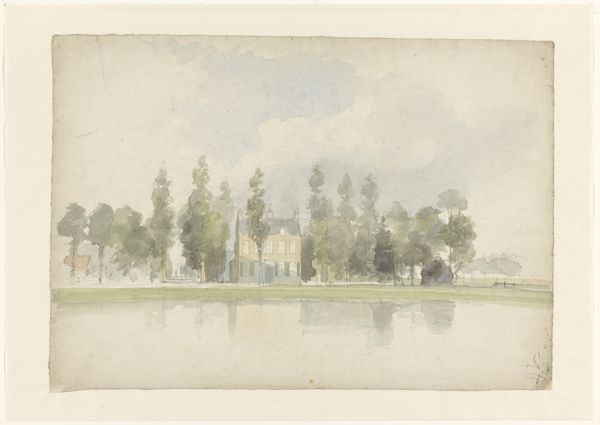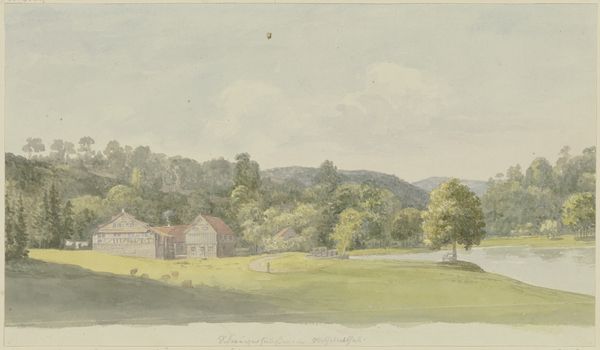
painting, watercolor
#
painting
#
landscape
#
watercolor
#
genre-painting
#
realism
Dimensions: height 218 mm, width 298 mm
Copyright: Rijks Museum: Open Domain
Curator: This delicate watercolor, likely dating from the 1860s, is titled "Buitenplaats 't Kleine Loo," and is attributed to Jan Gerard Smits. It exemplifies landscape art with elements of genre-painting, a testament to the artist's realistic yet gentle touch. Editor: It’s serene, almost nostalgic. The colors are muted, soft, giving it a slightly faded quality that evokes a bygone era. And the almost photographic accuracy with which Smits captures the building. Curator: Indeed. And, it’s important to consider how country estates depicted within artworks reflected social hierarchies. The estate becomes a visual signifier of power, wealth, and class divisions during the nineteenth century, presenting these socio-economic distinctions within the Dutch context. Editor: That’s interesting! I’m thinking about who this was made for and what purpose it would have served for its initial audience. Its scale also interests me, could its modest dimensions reflect how access to larger estates like this, were mostly closed to a large portion of the populace? Curator: Quite possibly. As you observed before, its realism speaks to a certain level of observational skill, but also to the societal importance of accurately documenting such a prominent visual status. Note that two people walk close to the main building on the grounds—what can this subtle social comment teach us about labor roles at the time? Editor: I wonder about the women depicted as well: Who are they and where are they headed? As viewers we’re positioned to look in as voyeurs almost, and, because we lack further contextualization, all our speculations might perpetuate a flawed interpretation! Curator: And that’s what makes exploring pieces like this so relevant still today. Our questioning and understanding of social dynamics as they occurred—not as we want to imagine they did. These explorations contribute to art history, yet they are inextricably tied to our own contemporary socio-political viewpoints. Editor: Ultimately, analyzing Smits' watercolor highlights the intricate dialogue between artistic expression, societal representation, and our continued engagement with the complexities of the past.
Comments
No comments
Be the first to comment and join the conversation on the ultimate creative platform.
